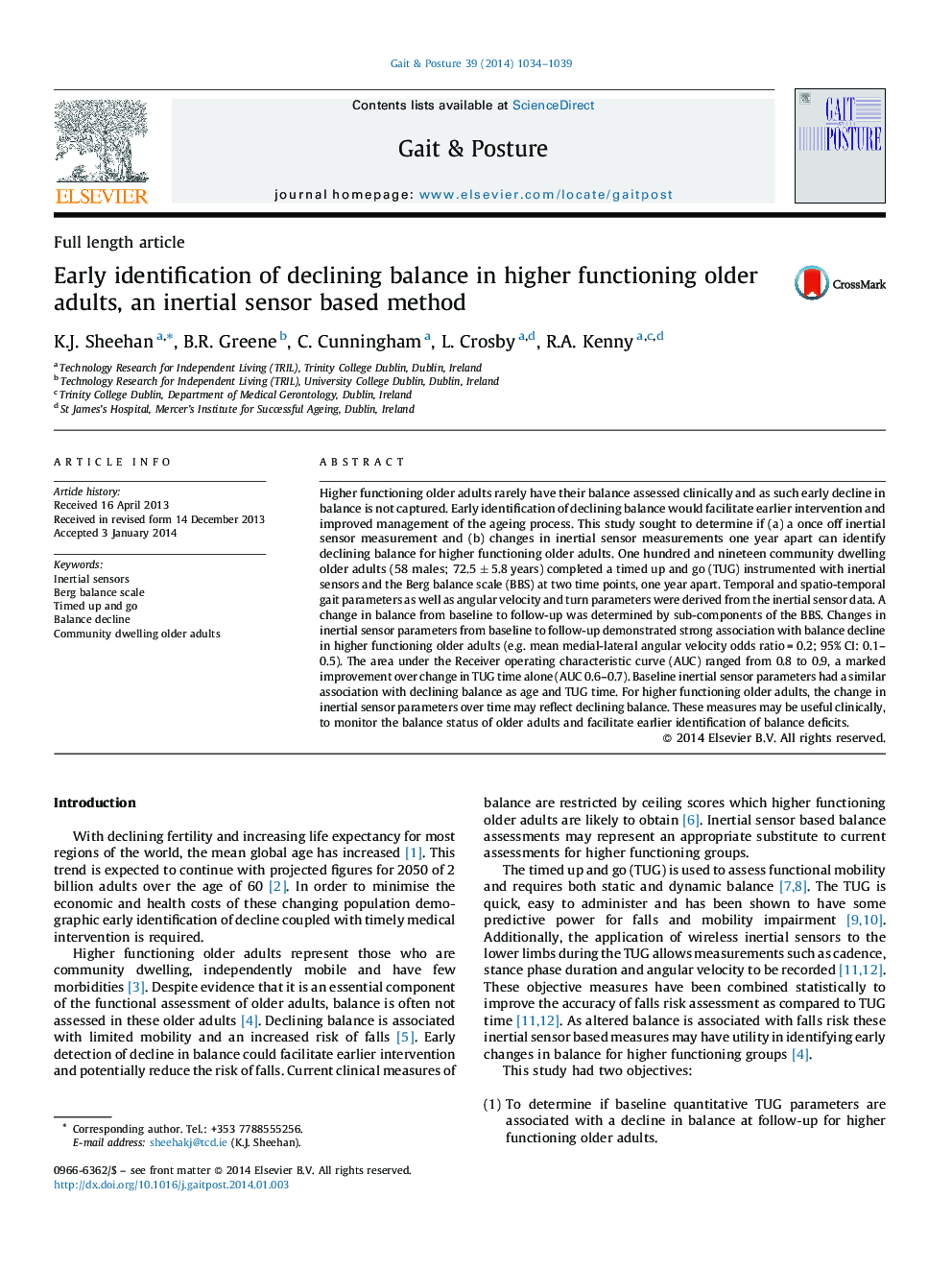| کد مقاله | کد نشریه | سال انتشار | مقاله انگلیسی | نسخه تمام متن |
|---|---|---|---|---|
| 6206287 | 1265643 | 2014 | 6 صفحه PDF | دانلود رایگان |
- We examine the use of single sensor measures to predict decline in balance.
- We assess if sensor measures change over time in a similar way to changes in balance.
- Sensor measures can predict a decline in balance.
- Sensor measures change over time in a manner which reflects declining balance.
- Sensor based measures may be more appropriate for higher functioning older adults.
Higher functioning older adults rarely have their balance assessed clinically and as such early decline in balance is not captured. Early identification of declining balance would facilitate earlier intervention and improved management of the ageing process. This study sought to determine if (a) a once off inertial sensor measurement and (b) changes in inertial sensor measurements one year apart can identify declining balance for higher functioning older adults. One hundred and nineteen community dwelling older adults (58 males; 72.5 ± 5.8 years) completed a timed up and go (TUG) instrumented with inertial sensors and the Berg balance scale (BBS) at two time points, one year apart. Temporal and spatio-temporal gait parameters as well as angular velocity and turn parameters were derived from the inertial sensor data. A change in balance from baseline to follow-up was determined by sub-components of the BBS. Changes in inertial sensor parameters from baseline to follow-up demonstrated strong association with balance decline in higher functioning older adults (e.g. mean medial-lateral angular velocity odds ratio = 0.2; 95% CI: 0.1-0.5). The area under the Receiver operating characteristic curve (AUC) ranged from 0.8 to 0.9, a marked improvement over change in TUG time alone (AUC 0.6-0.7). Baseline inertial sensor parameters had a similar association with declining balance as age and TUG time. For higher functioning older adults, the change in inertial sensor parameters over time may reflect declining balance. These measures may be useful clinically, to monitor the balance status of older adults and facilitate earlier identification of balance deficits.
Journal: Gait & Posture - Volume 39, Issue 4, April 2014, Pages 1034-1039
